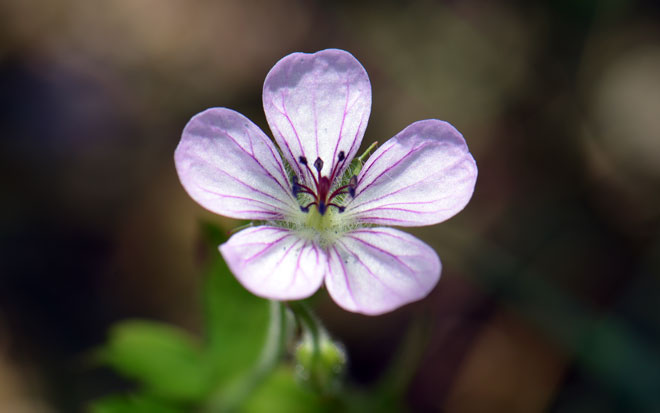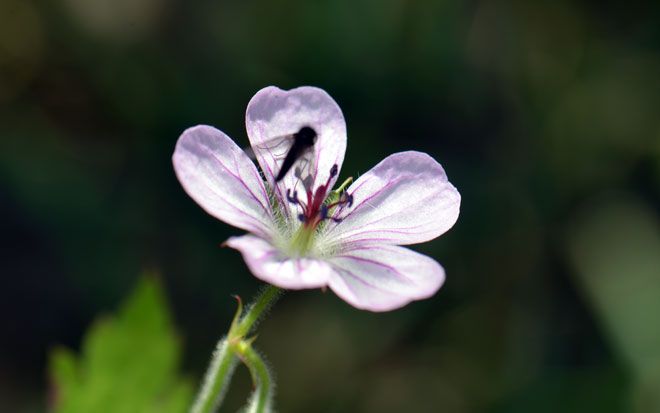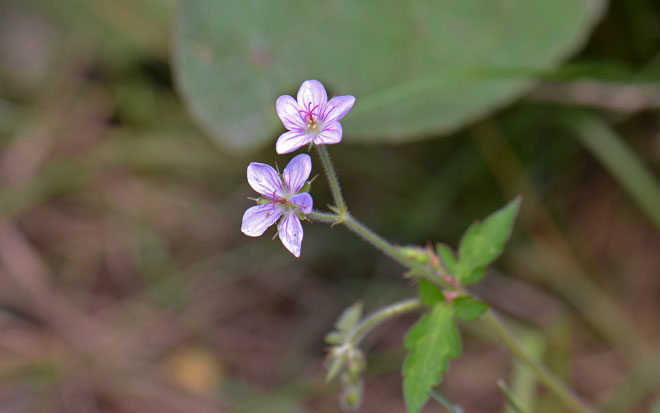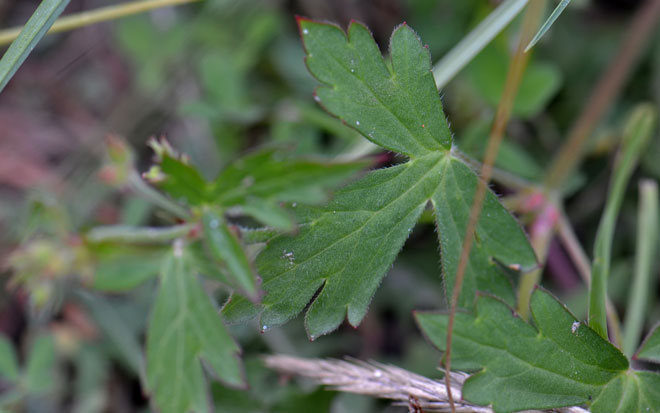Geranium richardsonii, Richardson's Geranium




Scientific Name: Geranium richardsonii
Common Name: Richardson's Geranium
Also Called: Richardson Geranium
Family: Geraniaceae, Cranesbill or Storksbill Family
Synonyms: ()
Status: Native
Duration: Perennial
Size: Up to 30 inches more or less.
Growth Form: Forb/herb; stems ascending to erect, plants mostly glabrous
Leaves: Green; about ½ wide, palmate 5 segments or parts
Flower Color: White, lavender or purple with purple veins; flowers with ¾ inch pedicels, 5 petals, 5 pointed sepals, fruit with relatively short style.
Flowering Season: April to October.
Elevation: 6,500 to 11,500 feet, 3,800 to 8,500 feet in California.
Habitat Preferences: Riparian and moist areas, meadows in Arizona common in coniferous forests.
Recorded Range: Richardson's Geranium is found in the west half of North America and in Arizona it occurs primarily in the eastern 2⁄3 of the state.
North America & US County Distribution Map for Geranium richardsonii.
U.S. Weed Information: No information available.
Invasive/Noxious Weed Information: No information available.
Wetland Indicator: In North America Geranium richardsonii has the following wetland designations;
Arid West, FACU; Great Plains, FAC; Western Mountains, Valleys, and Coast, FAC.
FAC, = Facultative, occur in wetlands and non-wetlands
FACU, = Facultative Upland, usually occur in non-wetlands, but may occur in wetlands.
Threatened/Endangered Information: No information available.
The Plant List includes 1,216 scientific plant names of species rank for the genus Geranium. Of these 411 are accepted species names.
Comments: Richardson's Geranium is important forage for wildlife including deer, elk, small mammals, birds and livestock. It is one of the most broadly distributed native geraniums in North America.
Also see in Southwest Desert Flora; Pineywoods Geranium, Geranium caespitosum and Carolina Geranium, Geranium carolinianum.
See several ethno-botanical uses at Native American Ethnobotany, University of Michigan, Dearborn.

